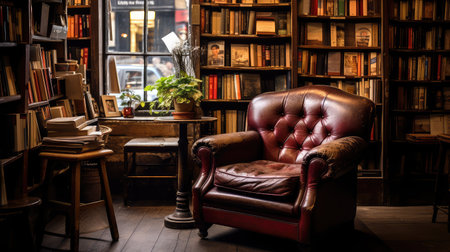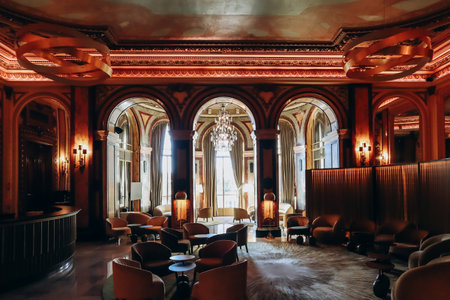Introduction: The Legacy of Georgian Homes in Britain
Georgian homes are a familiar and treasured sight across the British landscape, standing as testaments to the nations rich architectural heritage. Erected between 1714 and 1830, during the reigns of the first four King Georges, these properties are celebrated for their elegant symmetry, classical proportions, and refined decorative details. The enduring charm of Georgian architecture lies not only in its aesthetic appeal but also in its embodiment of a period marked by enlightenment values and social transformation. Today, Georgian houses remain highly sought after, admired for their spacious interiors, sash windows, and dignified facades. Their continued presence is a reminder of Britains layered history and a source of national pride. As we explore the restoration of these historic homes, we discover how careful preservation and thoughtful adaptation allow Georgian properties to retain their distinctive character while meeting the demands of modern living.
2. Diagnosis and Assessment: Understanding the Needs of Historic Properties
Before any restoration work begins on a Georgian home in Britain, a thorough diagnosis and assessment is essential to safeguard both heritage and functionality. Surveying historic properties requires a meticulous approach that respects the original structure while identifying areas where intervention is necessary. The process typically starts with an expert-led building survey, focusing on period-specific features such as sash windows, lime plaster walls, and traditional roofing materials. These elements require careful evaluation for signs of wear, structural movement, or material failure.
Key Areas of Survey and Assessment
| Aspect | Typical Issues | Assessment Methods |
|---|---|---|
| Structural Integrity | Subsidence, timber decay, cracked masonry | Visual inspection, structural engineer reports |
| Period Features | Deteriorated joinery, corroded ironwork, worn flooring | Condition surveys, historical documentation review |
| Services & Utilities | Outdated wiring, inefficient heating systems | M&E assessments, compliance checks with current standards |
| Moisture & Damp Control | Rising damp, poor ventilation, failed rainwater goods | Moisture mapping, inspection of drainage systems |
The Balance Between Preservation and Modernisation
A crucial challenge in Georgian home restoration is striking the right balance between preserving authentic character and integrating modern comforts. While maintaining original fabric—such as hand-crafted cornices or antique fireplaces—may be desirable for heritage value, safety and energy efficiency often necessitate upgrades. Restoration specialists must carefully document existing conditions to ensure interventions are reversible where possible and comply with British conservation best practices.
Maintenance Requirements Unique to Georgian Homes
Georgian properties have specific maintenance needs dictated by their age and construction techniques. For example, breathability is vital; using inappropriate modern materials can trap moisture and accelerate decay. Periodic inspections should focus on lime mortar pointing, timber frame protection, and proper functioning of original features like box sash windows. By understanding these requirements early in the restoration process, property owners can plan sympathetic interventions that uphold both heritage and liveability.

3. Case Study 1: Restoring Original Features with Contemporary Comforts
In this case study, we delve into the meticulous restoration of a classic Georgian townhouse located in Bath, a city renowned for its architectural heritage. The property, dating back to the late 18th century, presented a unique challenge: how to preserve its iconic period features while upgrading it to meet the demands of modern living and stringent UK building standards.
Sash Windows: Preserving Elegance and Efficiency
The original timber sash windows were one of the most striking aspects of the home’s façade. Rather than replacing them with modern alternatives, specialist joiners carefully restored the existing frames and weights. To improve thermal efficiency—crucial for British winters—discreet double-glazing was installed within the original sashes, maintaining their historic proportions and sightlines. Draught-proofing solutions were also integrated, ensuring comfort without compromising authenticity.
Cornices and Plasterwork: Authentic Detailing
Georgian homes are celebrated for their ornate cornices and decorative plasterwork. In this project, sections damaged by age and past renovations were painstakingly repaired by skilled craftsmen using traditional lime plaster techniques. Where new materials were required, moulds taken from surviving details ensured perfect continuity throughout reception rooms and hallways.
Heating and Insulation: Subtle Modernisation
While aesthetics remained paramount, comfort was equally prioritised. Underfloor heating was sensitively introduced beneath original floorboards on the ground level, providing even warmth without unsightly radiators. For insulation, natural sheep’s wool was installed in loft spaces and behind panelling, chosen for its breathability and sustainability—a nod to both modern eco-consciousness and traditional British materials.
Seamless Integration: Old Meets New
The success of this restoration lies in its seamless blending of old and new. Every upgrade—from energy-efficient lighting to smart controls for heating—was discreetly concealed to respect the property’s character. This approach not only preserved the home’s Grade II listed status but also delivered a comfortable, future-proofed residence fit for contemporary life in Britain.
4. Case Study 2: Sustainable Solutions in Heritage Settings
When it comes to restoring Georgian homes across Britain, the challenge is always to maintain historical authenticity whilst meeting the demands of modern living. In this case study, we examine a Grade II listed townhouse in Bath where sustainable technologies have been seamlessly integrated with time-honoured craftsmanship.
Project Overview
The project aimed to retrofit a late 18th-century property for improved energy efficiency without compromising its period character. The homeowners were keen to respect the original architectural features while reducing their carbon footprint—a delicate balancing act requiring both technical expertise and sensitivity to heritage values.
Blending Old and New: Key Interventions
| Traditional Feature | Modern Solution | Outcome |
|---|---|---|
| Lath and plaster walls | Internal insulation using breathable natural materials | Improved thermal performance, walls remain vapour permeable |
| Sash windows with original glass | Secondary glazing discreetly installed behind frames | Draughts eliminated, U-values improved, historic glass preserved |
| Slate roof with parapet gutters | Bespoke solar slates matched to existing materials | Renewable energy generation almost invisible from street level |
| Original fireplaces and chimneys | Draught-proofing and flue dampers fitted internally | Heat loss minimised while maintaining period features intact |
Eco-Friendly Upgrades in Practice
This restoration demonstrates that sustainable solutions can be sympathetic to heritage. For example, solar technology was cleverly integrated into the rear roof slope, ensuring compliance with local conservation regulations. Meanwhile, the use of lime-based internal plasters allowed the building to breathe, crucial for preventing moisture-related decay in historic structures. Energy monitoring systems were installed unobtrusively within existing joinery, allowing the owners to track consumption without altering the visual integrity of the home.
The project highlights how British heritage properties can embrace modern sustainability standards through considered design and skilled workmanship—setting a benchmark for future restorations where environmental responsibility goes hand-in-hand with architectural stewardship.
5. Navigating Regulations: Listed Buildings and Planning Permissions
Restoring a Georgian home in Britain is more than just a labour of love; it’s a careful balancing act between preserving historic character and meeting modern needs. One of the most critical aspects homeowners face is managing the legal framework that governs listed buildings and planning permissions. Understanding these regulations is essential to ensure your restoration project both honours heritage and complies with UK law.
Understanding Listed Building Status
Most Georgian homes of historical significance are “listed”, meaning they are recognised by Historic England for their special architectural or historical interest. Properties can be Grade I, II*, or II listed, with restrictions increasing at each level. Any alterations, extensions, or demolitions require Listed Building Consent from your local authority, separate from standard planning permission. Failing to secure this consent before starting work can lead to hefty fines or even criminal charges.
The Role of Conservation Officers
Local conservation officers play a pivotal role in overseeing changes to listed buildings. Engaging with them early in your project is not just recommended—it’s essential. These professionals provide invaluable guidance on what is permissible and help you avoid costly mistakes. Their input ensures that proposed works respect the building’s character, fabric, and setting. Open dialogue often leads to creative solutions that satisfy both modern requirements and heritage values.
Navigating Planning Permission
Even if your plans seem minor, such as replacing windows or updating internal layouts, always check if planning permission is required alongside listed building consent. The UKs planning system places great emphasis on the preservation of historic environments, particularly in Conservation Areas where Georgian properties are commonly found. Applications must typically include detailed drawings, heritage statements, and sometimes environmental impact assessments.
Tips for Complying with UK Building Regulations
- Do Your Homework: Research your property’s listing details and local planning policies before drawing up any plans.
- Engage Specialists: Work with architects and contractors experienced in heritage restorations who understand the nuances of period materials and techniques.
- Document Everything: Keep comprehensive records of consultations, permissions, and works carried out for future reference or resale purposes.
- Prioritise Reversibility: Where possible, choose interventions that can be undone without lasting damage to original features—this is often favoured by conservation officers.
A Practical Mindset for Success
Treating regulatory navigation as part of the restoration craft itself fosters a positive working relationship with authorities and enhances the final result. While compliance might seem daunting at first, it ensures your Georgian home remains both legally sound and historically authentic—a true meeting point of heritage and modernity.
6. Preservation vs. Innovation: Lessons Learned from British Georgian Restorations
Restoring Georgian homes in Britain is a balancing act between preserving architectural heritage and introducing modern comforts. This delicate interplay raises fundamental questions about what should be retained, what can be adapted, and how new technologies can serve historic integrity without compromising it.
Challenges Encountered
Many restorers face the challenge of dealing with aged materials and outdated building methods. Original sash windows may be draughty yet integral to a home’s character, while ancient wiring poses safety concerns. Strict planning regulations often restrict alterations to listed properties, requiring creative navigation through bureaucratic channels and thoughtful engagement with conservation officers.
Creative Solutions
Innovative approaches have become essential for success. For instance, discreetly installing double-glazed units that mimic period glass maintains energy efficiency without detracting from historical aesthetics. Underfloor heating systems are frequently used in place of intrusive radiators, and smart home technology is cleverly concealed behind traditional panelling. Craftspeople skilled in lime plastering or joinery help blend repairs seamlessly with original features.
Best Practices for Future Projects
- Thorough Assessment: Begin with a detailed survey to understand the building’s structure, original materials, and previous interventions.
- Sympathetic Materials: Use like-for-like or compatible materials wherever possible to ensure longevity and authenticity.
- Collaboration: Engage local heritage experts, conservation architects, and skilled tradespeople familiar with Georgian construction techniques.
- Modern Adaptation: Prioritise reversible upgrades—such as secondary glazing or freestanding kitchen units—so future generations can reinterpret the space if needed.
Nurturing Character While Embracing Functionality
The key lesson learned from these case studies is that the most successful Georgian restorations respect the past while thoughtfully responding to present-day needs. By blending meticulous preservation with sensitive innovation, homeowners can ensure these cherished dwellings remain vibrant parts of Britain’s architectural landscape for centuries to come.


